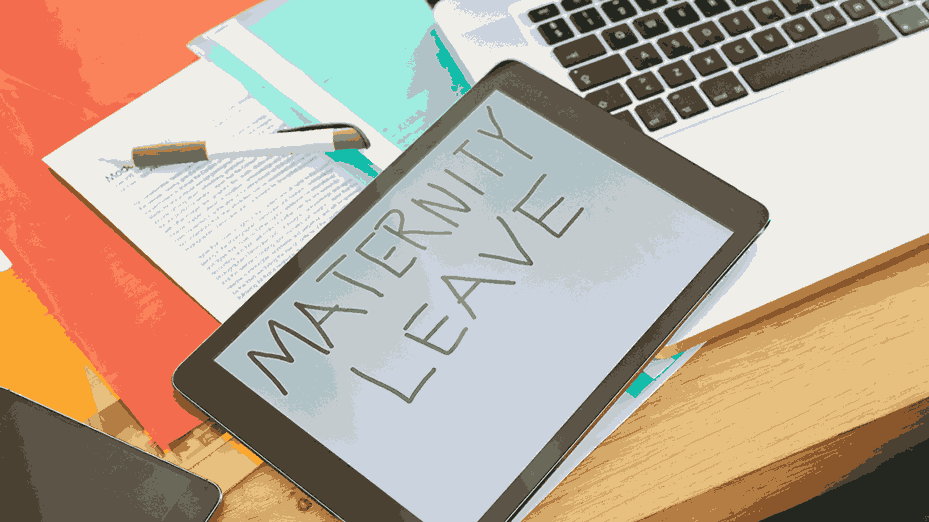Expecting a baby? Congratulations!
We understand that this phase is very special for you and you want everything to be right. Well here we are, to help you with your maternity leave planning – because it can feel a bit overwhelming.
To start with, writing a clear, respectful, informative and well-structured maternity leave application is important. Whether you are sending it to your HR or manager, communicating your leave plans professionally ensures a smooth handover at work. In this blog, we will walk you through different formats, essential tips and ready-to-use samples to make your maternity leave application stress-free and effective.
What Is A Maternity Leave?
Maternity leave is a mandated leave of absence granted to women employees for the purpose of childbirth, pre-birth and post-birth care. These practices help in the well-being of the mother and the newborn. The provision for maternity leave in India is governed by the Maternity Benefit Act, 1961, which was significantly amended in 2017 to extend its scope and benefits. This law ensures that working women can take time off from their professional duties without fear of losing their employment while attending to maternal responsibilities.
Women employees are entitled to an approx of 6.5 months of paid maternity leave. Out of this total duration, expecting mothers can avail leave 8 weeks before the expected delivery date, which is known as the pre-birth period. The remaining 18 weeks are to be taken after the childbirth, for the mother to recover and care for the newborn.
Why Write A Maternity Leave Application?
A maternity leave application is a formal letter written by a female expecting employee to request leave of absence due to childbirth and recovery. This application serves as an official documentation and helps in communicating the duration, reason and delegation of responsibilities during the leave period.
Importance Of Maternity Leave Letter
Writing a clear and professional maternity leave application is crucial for several reasons:
- Ensures Transparency: Your employer is well-informed about your leave dates and arrangements
- Official Record: Acts as legal proof of leave request
- Smooth Delegation: Allows time to assign duties or responsibilities to other team members
- Reduces last-minute Issues: Planning and informing early helps avoid workload disruption
Can Maternity Leave Be Extended?
Yes, maternity leave can be extended in the following ways:
1. Medical Extension: If the employee is unwell due to pregnancy, delivery or medical complications, she is entitled to an additional leave of 1 month (28 days), with medical proof.
2. Leave Without Pay (LWP): After exhausting the given maternity leave, extended unpaid leave may be granted based on mutual agreement with the employer and company policy.
3. Combining With Other Leaves: In many private organizations, earned leave (EL) or casual leave (CL) can be clubbed with maternity leave upon approval.
Tips For Writing A Maternity Leave Letter
1. Mention the expected due date and proposed leave duration clearly
2. Use a formal tone and professional language
3. Mention if work can be handed over to someone in your absence
4. Attach medical certificates if required
5. Mention your willingness to cooperate or assist during the handover
6. Be specific about your joining date
Sample Of Maternity Leave Application (Female Corporate Employees)
| Subject: Request for maternity leave Dear [Manager’s Name], I am writing to formally apply for maternity leave starting from [start date] as my due date is approaching. Based on my medical consultations, I would need [duration] of leave to manage delivery and postnatal recovery. I have prepared a handover plan for my responsibilities and will ensure a smooth transition before my leave. Kindly consider my application and grant me maternity leave from [start date] to [end date]. I am available to provide any further documents, including medical certificates, if needed. Thank you for your support. Regards, [Your Full Name] [Department/Position] [Employee ID] [Contact Information] |
Sample Of Maternity Leave Letter (Teachers/Student)
| Subject: Application for maternity leave Respected Principal, I am writing to formally request maternity leave starting from [start date] as I am expecting my delivery around [due date]. As per my doctor’s advice, I will require leave for [number of weeks/months] to ensure proper recovery and care for my newborn. I kindly request you to grant me maternity leave from [start date] to [end date]. I assure you that I will complete any pending responsibilities before my departure and hand over necessary tasks to my colleagues. Thank you for your understanding. Regards, [Your Full Name] [Designation] [Contact Information] |
Maternity Leave Rule For Student
Unlike working women, expecting female students in college/institutes are not guaranteed maternity leaves. However, some colleges and universities offer relaxation in attendance and leave days for postgraduate and PhD students, based on UGC rules or their own policies. Female students can request leave during pregnancy and colleges allow short-term medical leave if needed.
Mistakes To Avoid While Writing A Maternity Leave Application
- Using an informal tone
- Missing out on specific leave duration
- Not attaching medical certificates (if applicable)
- Vague joining or handover dates
- Sending application at the last minute
Conclusion
Taking maternity leave is an important step for the well-being of both the mother and the newborn. Hence, a well written maternity leave application not only reflects your professionalism but also helps the employer plan work responsibilities smoothly in your absence. Planning your leave well in advance ensures a stress-free transition for you and your team. Hence, if you’re preparing to welcome a new life, make your maternity journey smoother by starting with the right application.
Related reads: Leave Application Format: Sample, Types And Tips And Sample To Write Leave Application For Vacation
FAQs
Q1: How many months of maternity leave is allowed in India?
A- As per Indian law, female employees are eligible for up to 26 weeks (6.5 months) of paid maternity leave.
Q2: Can maternity leave be extended beyond the allowed period?
A- Yes, depending on the organization’s HR policy or by applying for unpaid leave with valid medical documentation.
Q3: Do I need to provide medical proof while applying for maternity leave?
A- In most cases, yes. A doctor’s certificate or medical report is commonly required.
Q4: Is maternity leave applicable for private companies?
A- Yes, the Maternity Benefit Act covers both public and private sector organizations.
Q5: Can maternity leave be taken in advance?
A- Yes, a part of the maternity leave can be taken before the due date if advised by a doctor.
Q6: Does pregnancy affect my job and career?
A- Pregnancy does not legally affect your job or career in India. With proper maternity leave policies in place, women are protected against discrimination and can resume work after childbirth.






 Facebook
Facebook Instagram
Instagram Twitter
Twitter